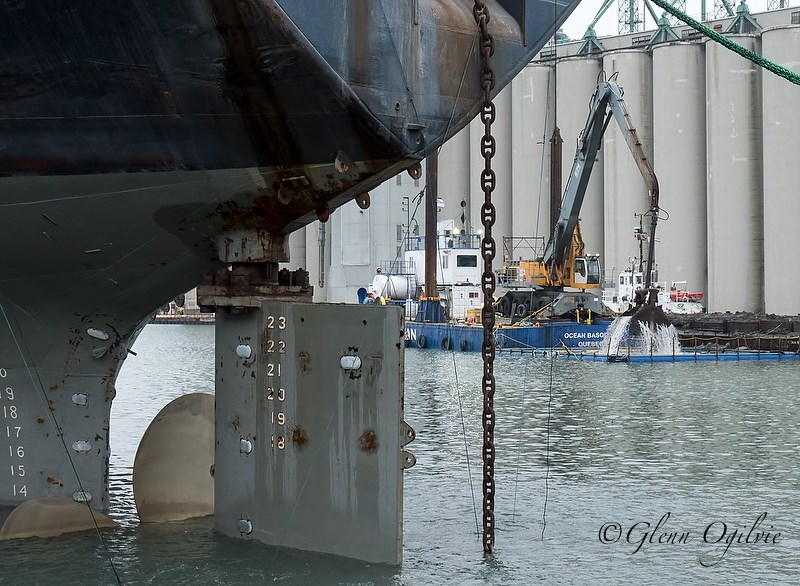Troy Shantz
The first dredging of Sarnia Harbour coordinated and executed by the city has ended — and not a moment too soon.
The last scoop of muck was pulled from the Harbour floor late last week, resulting in a minimal overlap with the lucrative ship repair season this winter, said Peter Hungerford, Sarnia’s director of economic development.
“All of the ships that were scheduled to come, that we knew about, got in without incident.”
Like contestants in a slow game of musical chairs, a few ships had to be shuffled around in the North Slip when it was dredged last month, he said.
A final survey will be done in coming weeks to confirm the contractor, Quebec-based Ocean Dredging, achieved the target depths of 8.4 metres at the Government Dock and North Slip, and 8.6 metres at the Sydney Smith Wharf.
The city-owned facility had reached a point it could no longer accept fully loaded ships, forcing it to turn down requests to dock.
The $3-million project was scheduled for completion in December but sediment testing and handling set that back, Hungerford said.
There were fears the dredged sediment might be contaminated, like the soil in nearby Centennial Park, and require pricey disposal protocols.
But 20 test samples revealed negligible levels of contamination and the mud was trucked to surplus land at Sarnia Chris Hadfield Airport.
But that created another challenge, Hungerford said.
“It was a matter of dealing with excess water due to the rain we had. The material was wet - wetter than we had hoped. That was probably the biggest complication.”
Pumps are helping dry the dredged material that will eventually be graded into a berm at the airport and seeded with grass this spring, he said.
“We did have some extra expenses, said Hungerford, who didn’t yet have a final figure. “But nothing more than you’d expect with a project this size.”
The dredging should satisfy the Harbour’s needs for up to a decade, although weather and erosion on Lake Huron’s shoreline will determine when the next dredging is needed, Hungerford said.
“I’m hoping between eight and ten years, but that depends on what the river brings us.”
The Harbour normally fills in with sediment at a rate of about two centimetres a year.
Dredging last occurred at Sarnia Harbour in 2008 when it was completed by Transport Canada and Federal Public Works.
